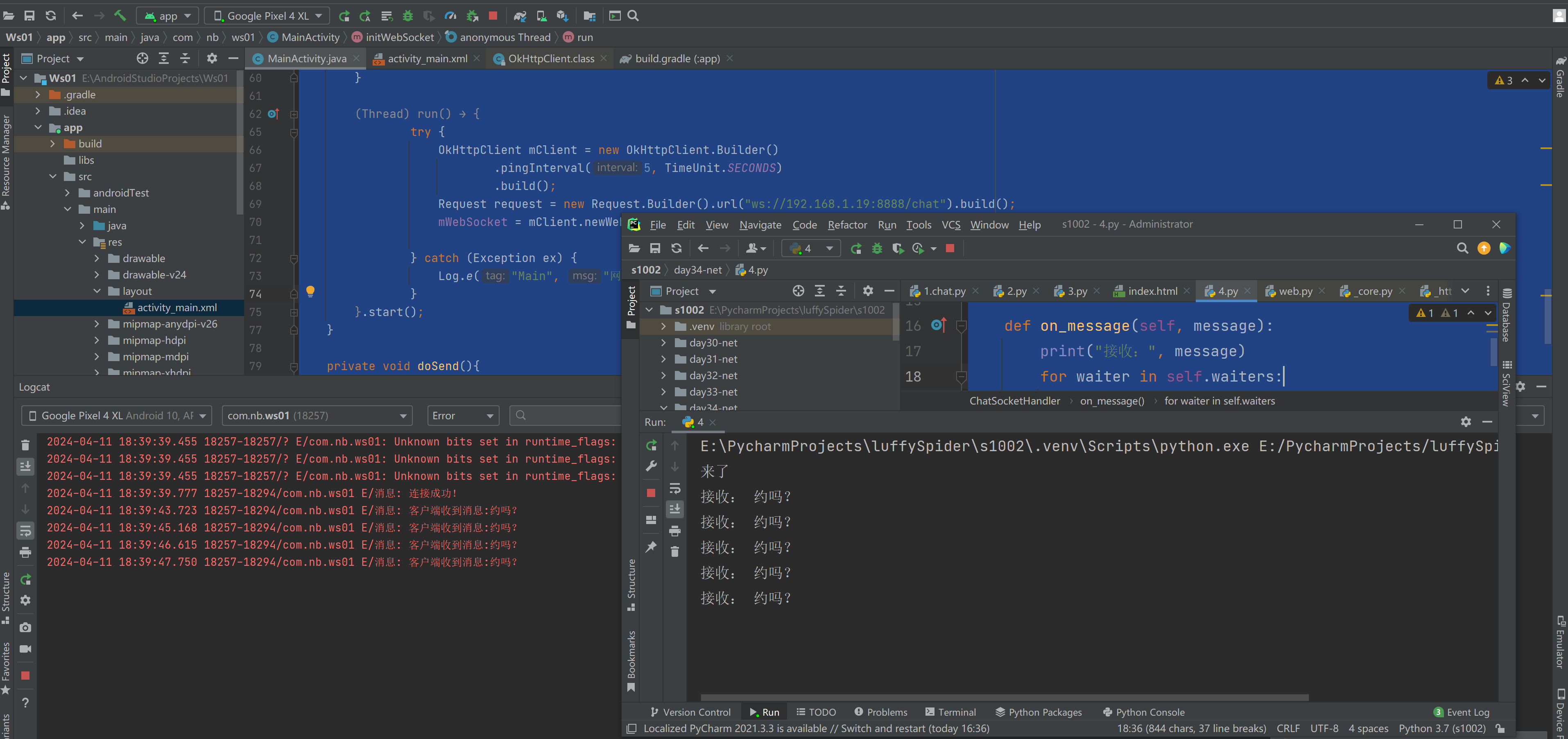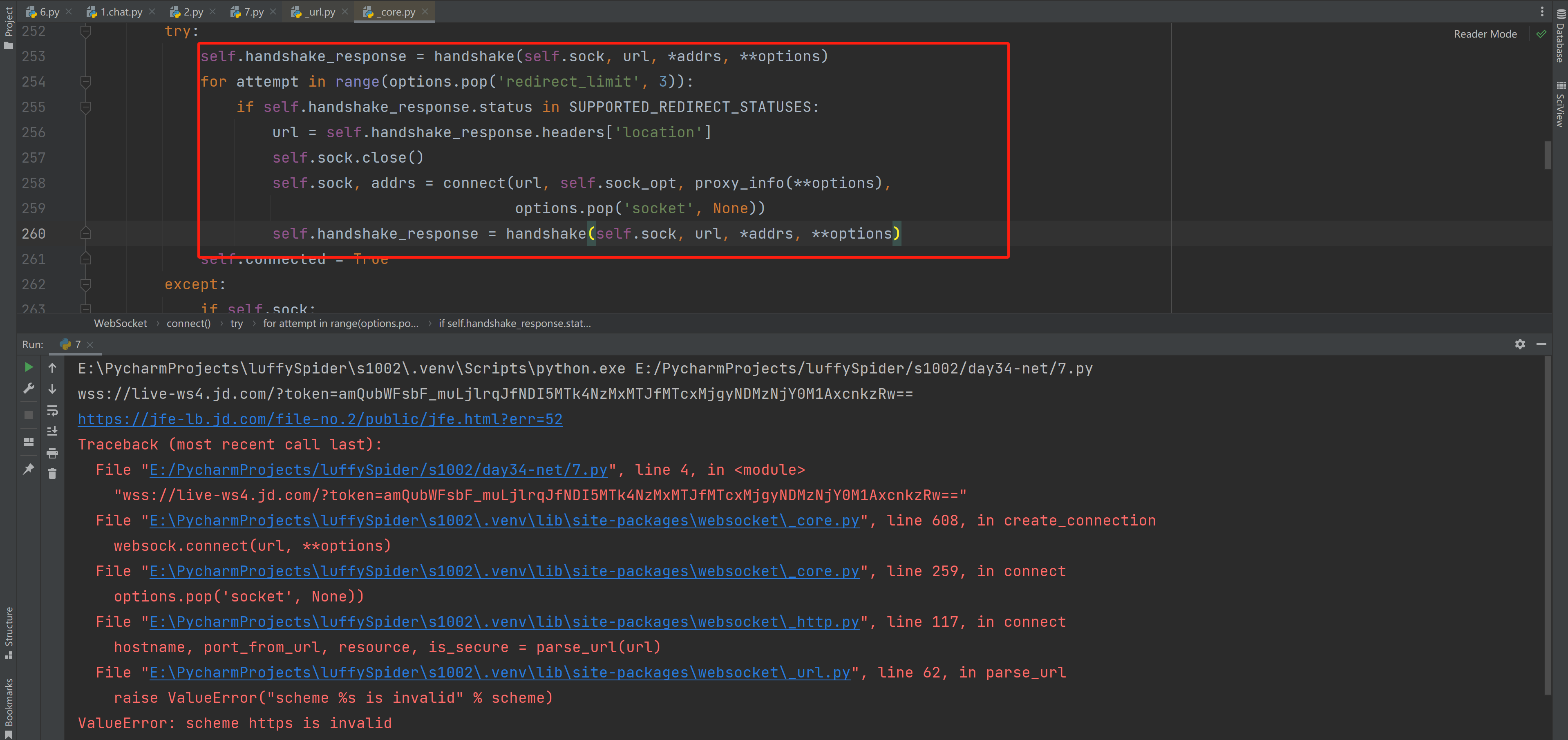1
2
3
4
5
6
7
8
9
10
11
12
13
14
15
16
17
18
19
20
21
22
23
24
25
26
27
28
29
30
31
32
33
34
35
36
37
38
39
40
41
42
43
44
45
46
47
48
49
50
51
52
53
54
55
56
57
58
59
60
61
62
63
64
65
66
67
68
69
70
71
72
73
74
75
76
77
78
79
80
81
82
83
84
85
86
87
88
89
90
91
92
93
94
95
96
97
98
99
100
101
102
103
|
import socket
import base64
import hashlib
def get_headers(data):
"""
将请求头格式化成字典
:param data:
:return:
"""
header_dict = {}
data = str(data, encoding='utf-8')
header, body = data.split('\r\n\r\n', 1)
header_list = header.split('\r\n')
for i in range(0, len(header_list)):
if i == 0:
if len(header_list[i].split(' ')) == 3:
header_dict['method'], header_dict['url'], header_dict['protocol'] = header_list[i].split(' ')
else:
k, v = header_list[i].split(':', 1)
header_dict[k] = v.strip()
return header_dict
def send_msg(conn, msg_bytes):
"""
WebSocket服务端向客户端发送消息
:param conn: 客户端连接到服务器端的socket对象,即: conn,address = socket.accept()
:param msg_bytes: 向客户端发送的字节
:return:
"""
import struct
token = b"\x81"
length = len(msg_bytes)
if length < 126:
token += struct.pack("B", length)
elif length <= 0xFFFF:
token += struct.pack("!BH", 126, length)
else:
token += struct.pack("!BQ", 127, length)
msg = token + msg_bytes
conn.send(msg)
return True
def run():
sock = socket.socket(socket.AF_INET, socket.SOCK_STREAM)
sock.setsockopt(socket.SOL_SOCKET, socket.SO_REUSEADDR, 1)
sock.bind(('127.0.0.1', 8003))
sock.listen(5)
conn, address = sock.accept()
data = conn.recv(1024)
headers = get_headers(data)
response_tpl = "HTTP/1.1 101 Switching Protocols\r\n" \
"Upgrade:websocket\r\n" \
"Connection:Upgrade\r\n" \
"Sec-WebSocket-Accept:%s\r\n" \
"WebSocket-Location:ws://%s%s\r\n\r\n"
value = headers['Sec-WebSocket-Key'] + '258EAFA5-E914-47DA-95CA-C5AB0DC85B11'
ac = base64.b64encode(hashlib.sha1(value.encode('utf-8')).digest())
response_str = response_tpl % (ac.decode('utf-8'), headers['Host'], headers['url'])
conn.send(bytes(response_str, encoding='utf-8'))
while True:
try:
info = conn.recv(8096)
except Exception as e:
info = None
if not info:
break
payload_len = info[1] & 127
if payload_len == 126:
extend_payload_len = info[2:4]
mask = info[4:8]
decoded = info[8:]
elif payload_len == 127:
extend_payload_len = info[2:10]
mask = info[10:14]
decoded = info[14:]
else:
extend_payload_len = None
mask = info[2:6]
decoded = info[6:]
bytes_list = bytearray()
for i in range(len(decoded)):
chunk = decoded[i] ^ mask[i % 4]
bytes_list.append(chunk)
body = str(bytes_list, encoding='utf-8')
send_msg(conn,body.encode('utf-8'))
sock.close()
if __name__ == '__main__':
run()
|







